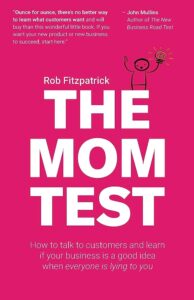The Relationship Between Business Models and Business Strategies
In the fast-paced world of business, terms like business model and business strategy are thrown around with such frequency that their true meanings can sometimes become obscured. These are not mere buzzwords, but distinct concepts that hold significant practical value for any organization.
When I started my solopreneur journey, I had no idea what these terms meant, nor their importance when starting a business. I’m sure that if I’d learnt about them sooner and actually applied them to my first few businesses, my first few startups would have been much more successful.
So that’s why, in this article, we will delve into these two fundamental business ideas and how they can help your business.
Before we get started, I’d recommend that you read my complete guide to creating a business plan here if you find this guide useful, as it will walk you through every step of creating your own business plan.
What Is a Business Model?
A business model is a strategic blueprint that outlines how a company intends to generate revenue. It encompasses the methods through which a business brings its products to the market, drives sales, and ensures profitability.
This plan also guides decisions regarding product offerings, marketing strategies, target customer segments, and potential income sources.
A business model can revolve around either a novel way of producing goods or a unique approach to marketing and selling them.
A prime example of this can be seen in the evolution of discount retailers, such as Walmart. These retail pioneers revolutionized the traditional department store by adopting the logic of supermarkets, ultimately giving birth to the discount retail model. This transformation involved reducing costs by eliminating frills like chandeliers, luxurious carpets, and personalized service in exchange for offering lower prices.
How Did Business Models Come About?
The concept of a “business model” began to gain prominence with the widespread adoption of personal computers and spreadsheet software.
According to Joan Magretta, this term emerged as managers were granted the ability to use these tools to crunch numbers and visualize how various decisions could impact their company’s financial health.
In essence, a business model serves as a blueprint for how a company operates. It outlines the key elements of the business, such as how it creates value, delivers products or services, and generates revenue.
What is a Business Strategy?
While the business model provides an insight into how a company operates, a “competitive strategy” is all about how a company aims to outperform its competitors. It is the game plan that differentiates one business from the rest.
In the case of Walmart, one of the pillars of their unique strategy was to prioritize serving rural customers. As Sam Walton, the company’s founder, put it, they strategically established “good-sized stores in little one-horse towns” that were often overlooked by other retailers. This approach proved highly successful.
Walmart’s focus on rural areas enabled them to:
- Acquire land at affordable prices
- Tap into an underserved customer base
- Preempt other discount retailers from entering those markets
The customer-centric strategy seamlessly complemented other aspects of their competitive strategy.
Combining Business Models and Strategies
To gain a competitive edge over rivals, your company needs more than just a sound business model and a clear strategy; it also requires a deep understanding of the differentiation between these two concepts. Without this understanding, your organization may struggle to stay competitive in a rapidly evolving market.
A robust business model forms the foundation upon which a company operates, while a well-defined competitive strategy is the roadmap to surpassing the competition.
Recognizing these distinctions is the first step towards achieving success in a dynamic and ever-changing business environment.
Key Takeaways
- Clear Definitions: In the business world, terms like “business model” and “business strategy” are more than just buzzwords. They are distinct concepts with practical significance that every entrepreneur and business owner should understand.
- Business Model Basics: A business model is the strategic plan that outlines how a company generates revenue. It guides decisions about products, marketing strategies, target customers, and income sources. It can be innovative in terms of product development or how products are marketed and sold.
- Evolution of Business Models: The concept of a business model gained prominence with the advent of personal computers and spreadsheet software, allowing managers to analyze and visualize financial impacts. It’s essentially a blueprint for a company’s operations, covering how it creates value, delivers products or services, and generates revenue.
- Competitive Strategy: A competitive strategy is about how a company intends to outperform its competitors. It sets a company apart from the competition and can lead to success, as seen in Walmart’s example of prioritizing rural customers, enabling them to tap into underserved markets and preempt competitors.
- Synergy of Models and Strategies: To excel in a competitive market, it’s crucial to grasp the distinction between a business model and a competitive strategy. A robust business model forms the foundation of your business, while a well-defined competitive strategy provides the roadmap to outperform rivals.
- Next Steps: Understanding these concepts is a vital first step toward success in the dynamic and ever-changing business landscape. To delve deeper into creating a business model, you can explore a comprehensive guide, and if you’re gearing up for a product launch, check out the pre-launch checklist for valuable insights.
Overview
Overall, business models and competitive strategies are not interchangeable terms; they serve distinct purposes in the world of business. Now that you understand this, I’d recommend you read my complete guide to creating a business model here.
Alternatively, if you’re looking to launch your product into the market, check out the complete pre-launch checklist here.







